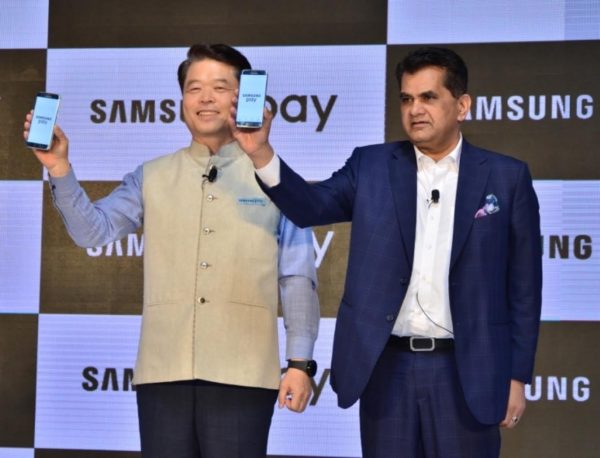Read the future
Hoard the future is out and reading it is in. Perplexed? Well, we are a nation that has essentially been a cash economy and 86% of our transactions are in cash. There is cash in the box, cash under the mattresses, cash in lockers, cash in purses and wallets, and cash is what changes hands during a transactions. Well, at least a part of this cash is certainly going to go the digital way. All this makes us a great informal economy and it is for this very reason that we need to merge the informal with the formal components as this is what is poised to transforming people’s lives. Let me first load you with a few more statistics before we talk about what this revolution is all about. Cash rules. Yes it really rules because 18% of our GDP is through cash circulation, 88% usage of debit cards (which is also 600 mio+ debit cards) is for cash withdrawals, and cash is what we queue day in and day out for. This isn’t the sort of attitude that is going to make Digital India smile… and so the miracle on the Ganga is when India taps and pay on the go!
By the way, a recent report published in TOI talks about Nandan Nilekani remarking that ‘the infrastructure needed to enable more than a billion people to transact digitally is already in place, but unlike the West, where card-based payments are more common, the Indian economy will digitalise through mobile-based payments that are faster and cheaper to roll out. Now, it is a matter of increasing awareness and keeping transaction charges low.’ Therefore, tap and pay on the go is here to stay.
Tap and pay on the go? Put so much trust into a mere mobile phone? Well, what we need is a concept better than an innovation… obviously, a meaningful innovation! Something that overrides the barriers related to security of a transaction, ease of use, and merchant acceptance. It needs to be simple, secure, and be enabled to work everywhere. So yes, a paradigm shift towards mobile payments is at our doorstep. The next frontier of innovation is what Samsung Pay is all about.
Before worry lines form their creases, let me hurriedly add that users can add all their registered cards, Paytm as well as the government’s Unified Payments Interface are integrated into the app. Samsung has also created a unique digital payment ecosystem by partnering with a number of issuers and card networks that include include Visa, MasterCard, American Express, Axis Bank, HDFC Bank, ICICI Bank, SBI Card and Standard Chartered Bank. Citibank India is a forthcoming issuer and its credit cards will also be live on Samsung Pay shortly.
Operating this system is simple, as I’ve already mentioned. Users simply need to swipe up the card or payment system of their choice on the applicable Samsung device… authenticate using fingerprint or PIN… bring phone near point of sale terminal… and Voila! the job is done. The system follows three levels of security with the first being fingerprint authentication… then comes card tokenization… and Samsung’s defense-grade mobile security platform Samsung KNOX.
Samsung Pay is far safer than carrying cash in a wallet, does not add or store any card info, uses card tokenization for security, and card info is never shared. The system works with Samsung’s patented Magnetic Secure Transmission (MST) technology as well as with Near Field Communication (NFC). MST replicates a card swipe by wirelessly transmitting magnetic waves from the supported Samsung device to a standard card reader. Through MST, Samsung pay will work seamlessly on a majority of Point of Sale terminals in India. Mr. HC Hong, President and CEO, Samsung Southwest Asia, informs that ‘Samsung Pay is poised to redefine digital payments and contribute to Digital India.’ Mr. Thomas Ko, Global GM of Samsung Pay calls it ‘a complete digital wallet solution, allowing customers worldwide to not only make payments but also use membership and transit cards, receive deals and rewards and more’. As a lover of technology and innovations I agree with Asim Warsi, Senior Vice President, Mobile Business, Samsung India, when he says that ‘our insights show that convenience, security and acceptance are seen by consumers as the most important influencers when choosing among different digital payment options.’
Samsung Pay is currently available on Galaxy S7 edge, Galaxy S7, Galaxy Note 5, Galaxy S6 edge+, Galaxy A5 (2016), Galaxy A7 (2016), Galaxy A5 (2017) and Galaxy A7 (2017). It will also be available on the Samsung Gear S3 Smartwatch shortly, allowing users to pay through their wearable device.
A faceless, paperless, and a cashless future is what consumer acceptance can make for India. However, there will always be concerns about the time taken to complete a transaction, transfer or payment, and the amount applicable might vary from one adopted system to another… but what Samsung Pay achieves best is the validation or authentication of a transaction and the security of a consumer’s card details. What is also true of Samsung Pay is that it is available in 12 global markets, including South Korea, the US, China, Spain, Singapore, Australia, Puerto Rico, Brazil, Russia, Thailand and Malaysia.
In a world dominated by transformation, modernization, and digitization, a revolutionary way to pay is what is finally going to read the future!
.
.
.
.
.
This article was published in ‘The Education Post’ on 03 April 2017:
.
Arvind Passey
Written on 27 March 2017










